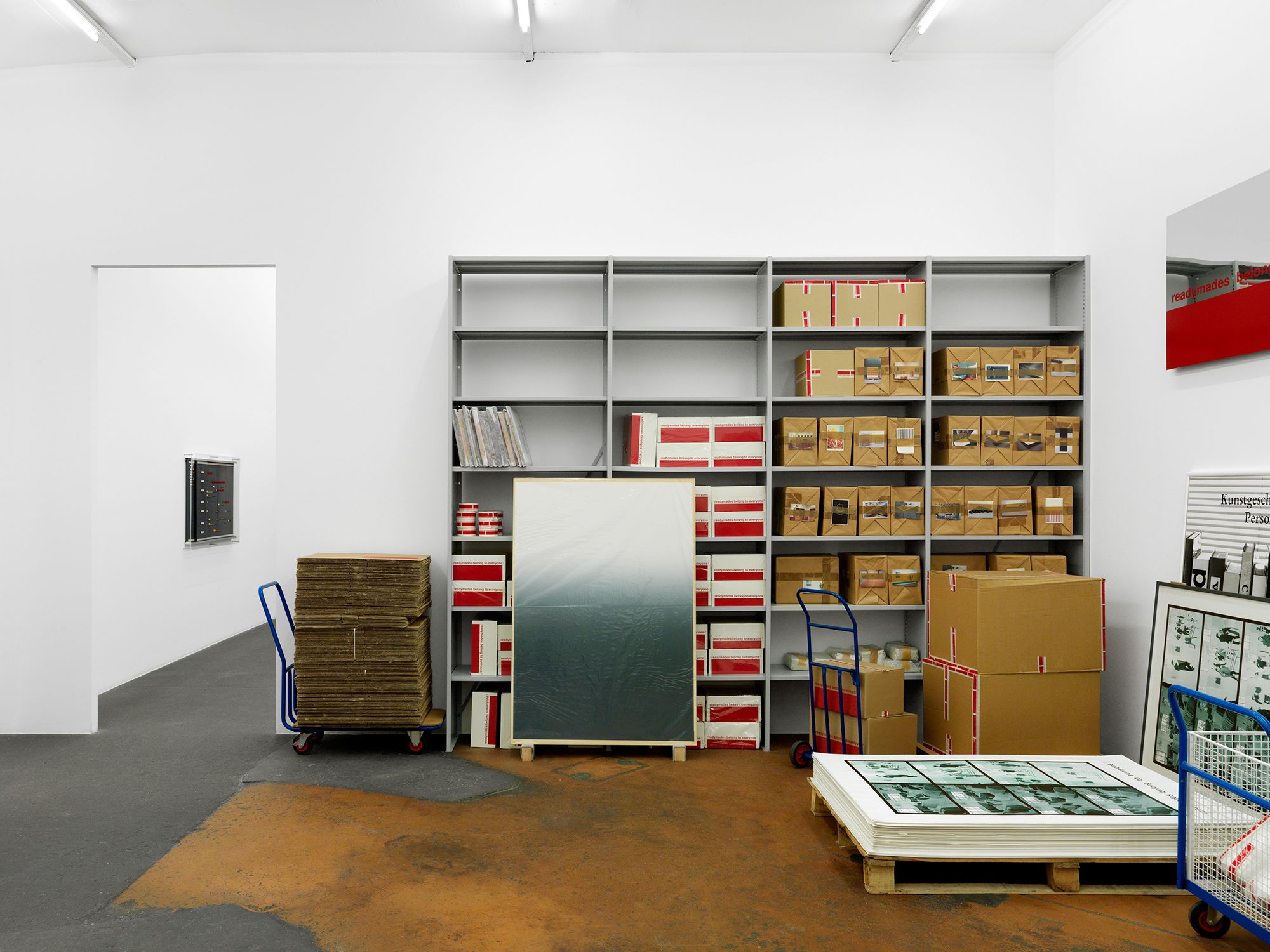In December 1987, at New York’s Cable Gallery, the French artist Philippe Thomas (195–1995) opened his first agency, which he called ‘readymades belong to everyone®’. Soon afterwards, in September 1988, a second branch was established at the Claire Burrus gallery in Paris, with the equivalent French name ‘les ready-made appartiennent à tout le monde®’.
readymades belong to everyone® was a communication and events agency that provided services. The most immediate result was that the artist—his name and surname—disappeared as the author of his works, which instead took on an impersonal meaning. The reference to Duchamp is obvious, but it also reflects a given state of the commercial world and a given age of production (thus the ® in the name of the agency indicated that it was a registered trademark). The agency consisted of an office and a waiting room in one and the same place, like the reception and working area of a commercial firm. The agency readymades belong to everyone® devised a number of projects and advertising campaigns, sometimes in partnership with other communication agencies such as Dolci Dire & Associés or BDDP/Paris. They represent an aesthetic of communication in highly standard forms: posters and signboards with carefully designed slogans and pictures. Among the most striking items created by the agency were its bar codes, the signs affixed to all manufactured products that are for sale, a kind of digital signature for merchandise of all kinds, which here are presented monumentally as paintings that can be reproduced ad infinitum. There are more than thirty of them, reflecting a given state of the commercial world turned into a kind of contemporary still life with multiple authors. Philippe Thomas invented works that were ready for signature: although he was entirely responsible for their creation, not to say manufacture, from the late 1980s onwards he stopped signing them, thus disappearing from view in favour of the agency or of collectors and other art-world personalities—who as far as the public were concerned became the sole signers of the works. This piece of fiction in search of its characters thus represents the highly controlled work of an artistic figure who, from the beginning to the end of his entrepreneurial activity, was ultimately absent. Thus, from September 1994, readymades belong to everyone®’s final exhibition was held at MAMCO. These exhibits, including the objects that were displayed at the time, became a piece in the museum’s collection. There are the full cardboard boxes and packaging materials of a business for good and storing away its files—not just its administrative and managerial papers, but also various images reflecting its artistic past. The artist, who died some months after the exhibition opened, thus wound up his business with great mastery, lucidity and detachment, as well as modesty—a business that, having set out to record the author’s disappearance, nonetheless succeeded in inventing a style of its own.

